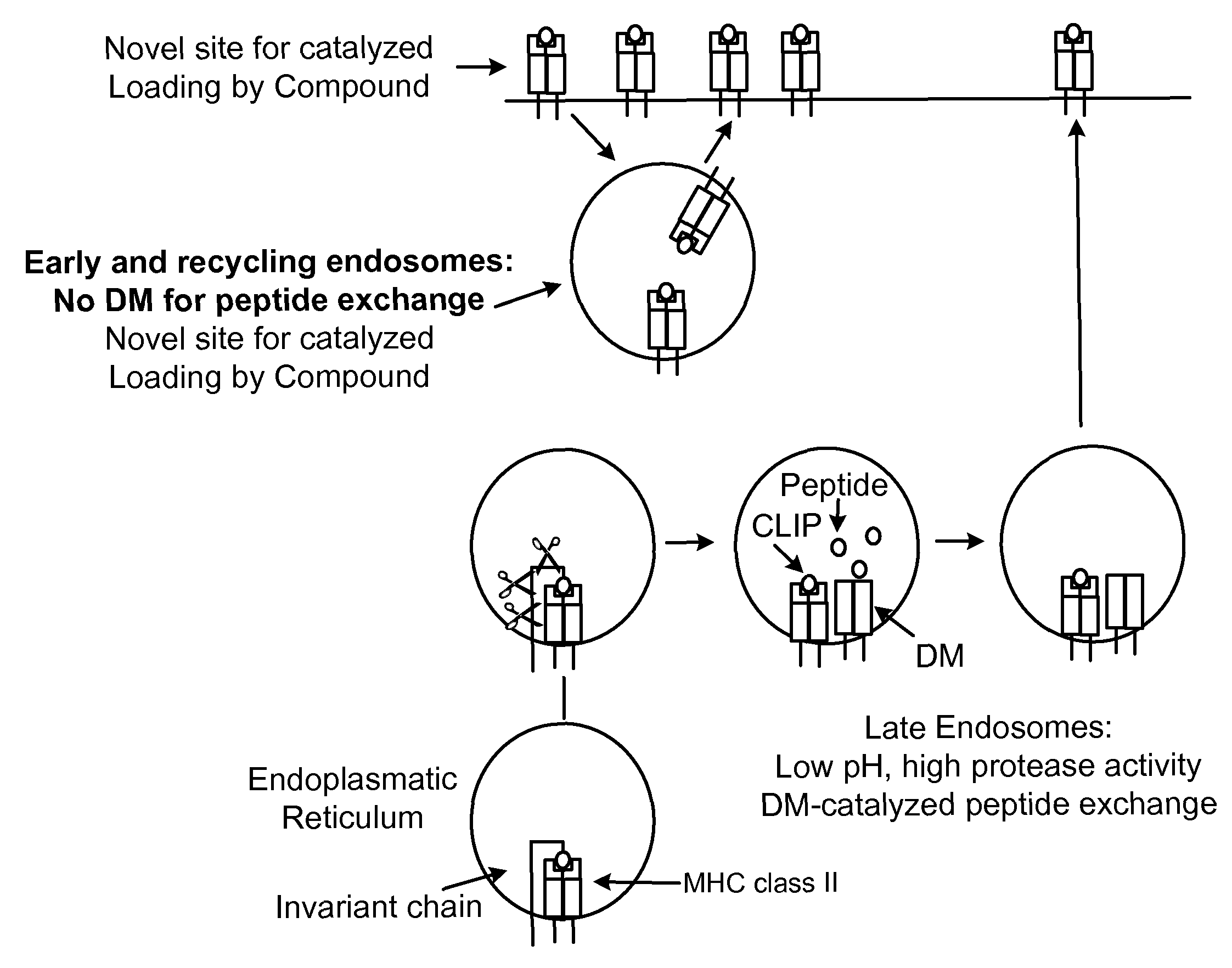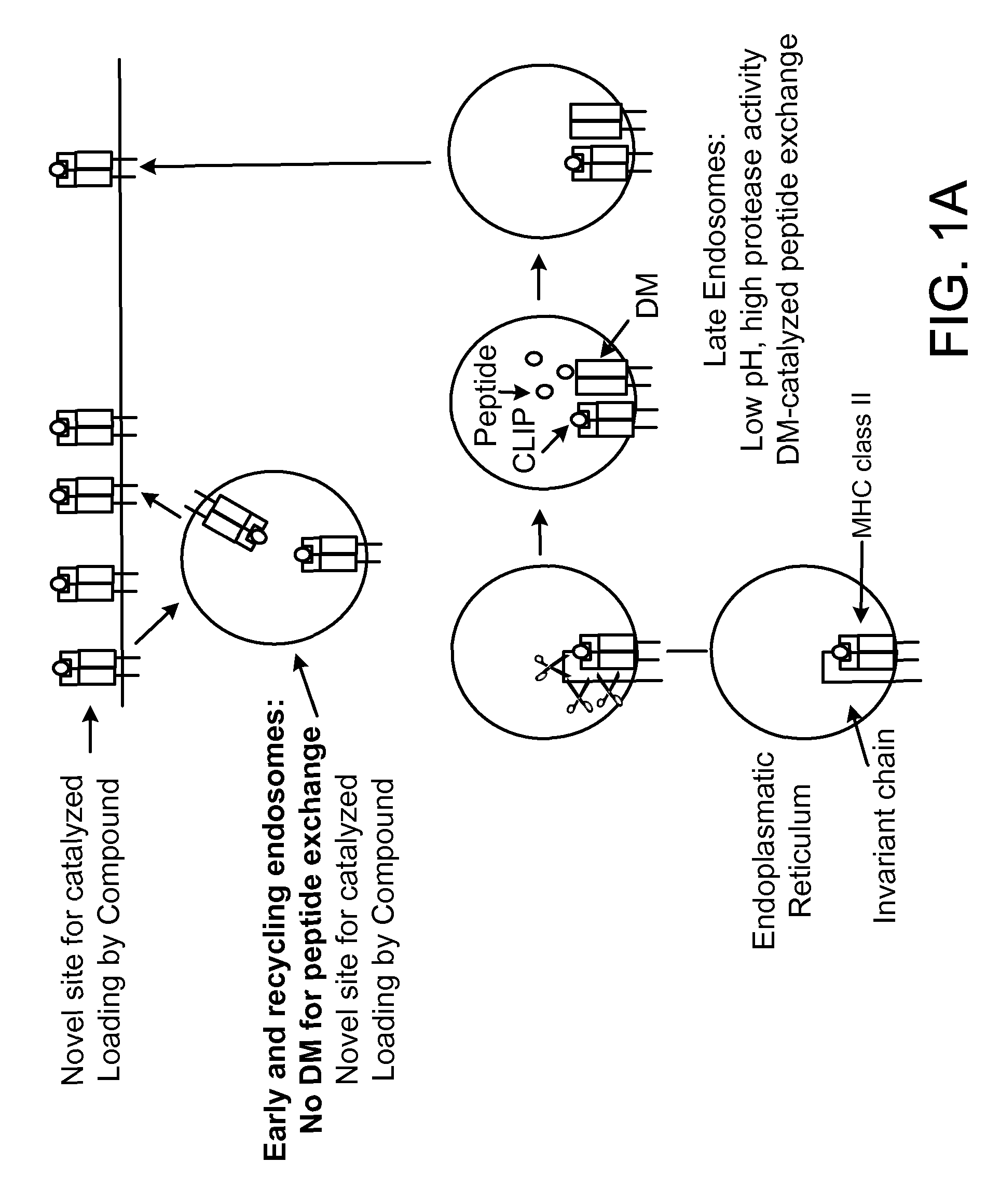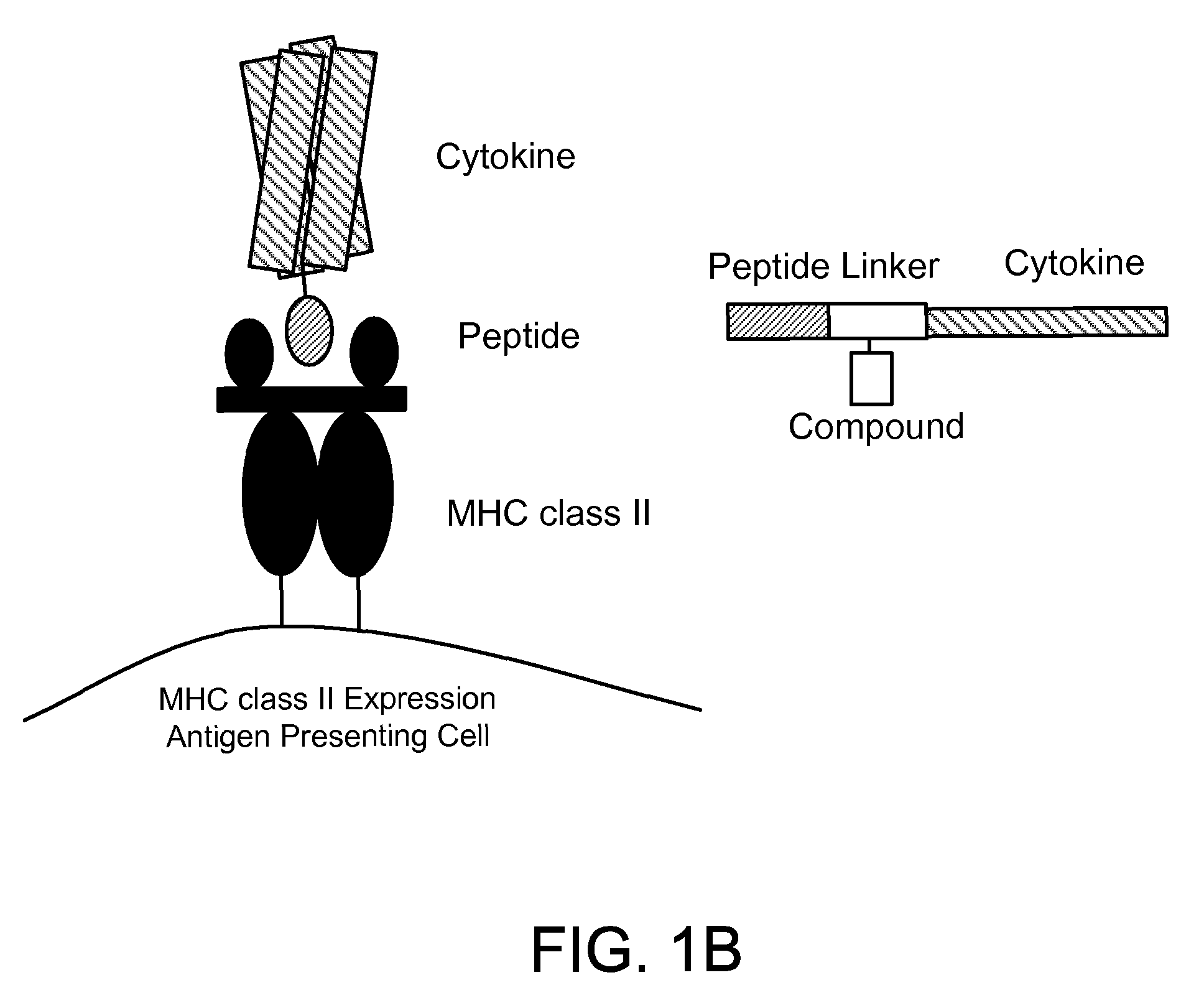Novel Compounds for Enhancing MHC Class II Therapies
a technology of enhancing mhc class ii and compounds, applied in the field of compounds, can solve the problems of autologous tissue destruction and risk of two dr alleles, and achieve the effects of boosting immunity against cancer, accelerating peptide loading, and more potent vaccines
- Summary
- Abstract
- Description
- Claims
- Application Information
AI Technical Summary
Benefits of technology
Problems solved by technology
Method used
Image
Examples
example 1
Expression of DR / CLIP Complexes for Identification of Small Molecules that Modulate Peptide Binding
[0263]The assay system that we used was based on the mechanism by which peptides are loaded onto MHC class II molecules in endosomes / lysosomes. This compartment is characterized by an acidic pH (4.5 to 5.5) and the presence of DM, which accelerates the release of CLIP from MHC class II molecules (Busch et al., 2005, Immunol. Rev., 207:242-260). In order to favor the identification of small molecules that modulate this process in the appropriate cellular compartment, we performed the assay with a DR / CLIP complex and a high affinity peptide at an acidic pH. Because invariant chain is highly sensitive to proteases, we generated DR / CLIP complexes as soluble molecules in CHO cells by attaching the CLIP peptide to the N-terminus of the DRβ chain via a linker with a thrombin cleavage site. Thrombin cleavage converts this inactive precursor into the appropriate substrate for the peptide exchan...
example 2
Development of a Real-Time Peptide Binding Assay Based on Fluorescence Polarization
[0265]MHC class II molecules reside only transiently in the endosomal / lysosomal peptide loading compartment and the kinetics of DM-catalyzed peptide exchange are therefore critical in the selection of the peptide repertoire in vivo (Busch et al., 2005, Immunol. Rev., 207:242-260). Applicants developed a real-time peptide binding assay designed to represent the environment of the peptide loading compartment and used it to search for small molecules that modulate this process. The MBP (85-99) peptide binds with high affinity to DR2 (Wucherpfennig et al., 1994, J. Exp. Med., 179:279-290) and we labeled it with Alexa™-488 because its fluorescence is stable at the acidic pH required for the assay (fluorescein is quenched at pH 5). Since the P5 lysine residue of the MBP peptide was solvent exposed in the structure of the DR2 / MBP peptide complex (Smith et al., 1998, J. Exp. Med., 188:1511-20), a maleimide de...
example 3
High-Throughput Screening of Large Libraries of Small Molecules
[0269]We then used this assay to screen a large and diverse collection of small molecules with the aim of identifying molecules that enhance peptide exchange. The screening was performed using a robotics workstation (Beckman Biomek FX pipette station with a Sagian Core system controlled by SAMI software, Beckman Coulter) in 384-well plates (40 μl volumes, duplicates) with DR2 / CLIP at 100 nM, DM at 20 nM and labeled MBP peptide at 10 nM. Fluorescent compounds were excluded based on readings taken before addition of the labeled MBP peptide. The overall fluorescence of each well was also read after peptide addition to ensure that all wells had received equal quantities of labeled MBP peptide. FP values were read at 30, 120 and 360 minutes following initiation of reactions. Reading of each plate required 5 minutes, and plates were therefore set up 5 minutes apart (for details, sec Nicholson et al., 2006, J. Immunol., 176:420...
PUM
| Property | Measurement | Unit |
|---|---|---|
| volume | aaaaa | aaaaa |
| pH | aaaaa | aaaaa |
| molecular weights | aaaaa | aaaaa |
Abstract
Description
Claims
Application Information
 Login to View More
Login to View More - R&D
- Intellectual Property
- Life Sciences
- Materials
- Tech Scout
- Unparalleled Data Quality
- Higher Quality Content
- 60% Fewer Hallucinations
Browse by: Latest US Patents, China's latest patents, Technical Efficacy Thesaurus, Application Domain, Technology Topic, Popular Technical Reports.
© 2025 PatSnap. All rights reserved.Legal|Privacy policy|Modern Slavery Act Transparency Statement|Sitemap|About US| Contact US: help@patsnap.com



